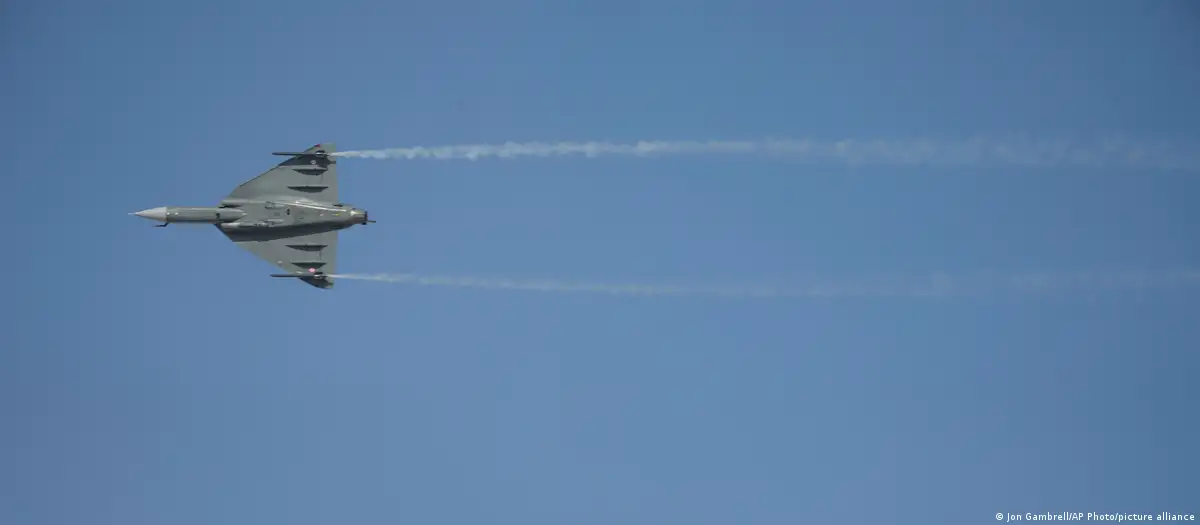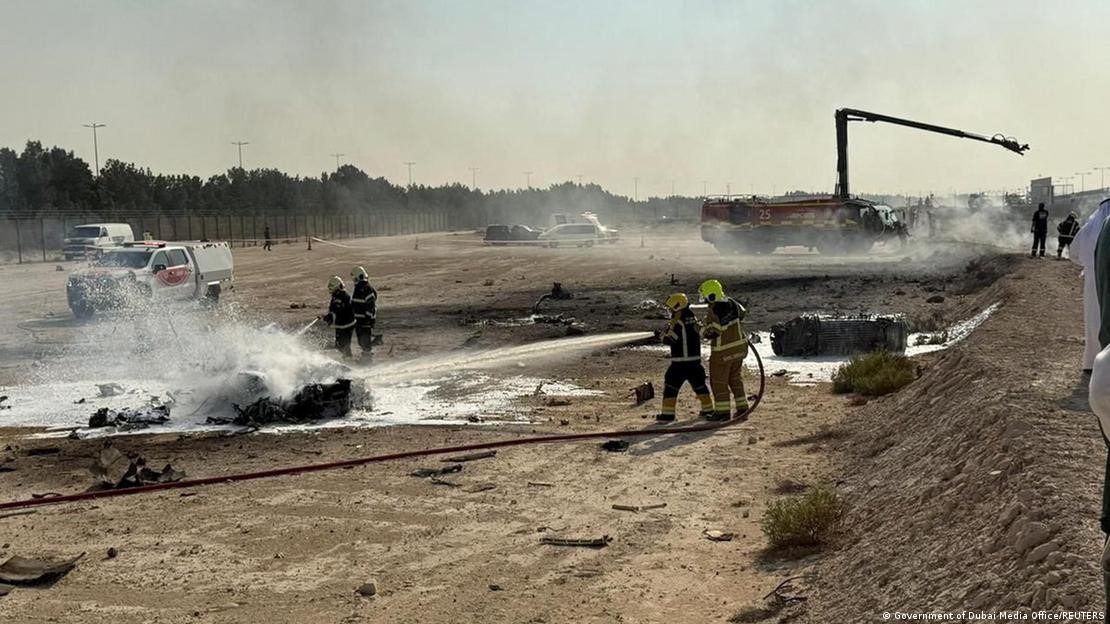Tejas crash in Dubai renews scrutiny of India’s fighter modernization plans
Tragedy exposes deep challenges; setback for India’s jet exports as crash highlights fleet and production gaps; with the world watching, the high-profile crash has dampened the mood, prompting renewed scrutiny of the program and the pace of India’s defense modernization.

- A senior IAF official, speaking on condition of anonymity, told DW that while the crash does not diminish the Tejas’ advantages over older Russian-origin aircraft such as the MiG-21, it remains below the performance level of modern Chinese fighters like the J-20 and J-16. “Tejas is central to India’s modernization efforts, but it still cannot match the fifth-generation systems fielded by our adversaries,” the official said.
- The Dubai crash has also cast a shadow over India’s broader attempt to rejuvenate its combat fleet. The Tejas Mark 1A — developed by Hindustan Aeronautics Limited (HAL) — is meant to replace the IAF’s aging stable of Russian and ex-Soviet jets and to demonstrate India’s capacity to design and manufacture advanced military platforms.
- The incident is also likely to affect India’s hopes of exporting the Tejas to foreign customers. The aircraft had been showcased as a symbol of India’s growing aerospace capabilities, and New Delhi had been actively pursuing export opportunities in Asia, Africa, and Latin America.
The crash of India’s Tejas Mark 1A light-combat aircraft during a low-level aerobatic display at last week’s Dubai Air Show has delivered a serious setback to New Delhi’s aviation ambitions.
The accident, which occurred in full view of global defense officials, claimed the life of a senior Indian Air Force (IAF) pilot and generated international concern over the aircraft’s reliability and export prospects.
The IAF has ordered a full investigation to determine whether the incident resulted from mechanical failure, pilot error, or other contributing factors. It is the second accident involving a Tejas in as many years; in March 2024, another jet crashed during a training mission in Rajasthan, though the pilot survived after ejecting.

A senior IAF official, speaking on condition of anonymity, told DW that while the crash does not diminish the Tejas’ advantages over older Russian-origin aircraft such as the MiG-21, it remains below the performance level of modern Chinese fighters like the J-20 and J-16. “Tejas is central to India’s modernization efforts, but it still cannot match the fifth-generation systems fielded by our adversaries,” the official said.
The Dubai crash has also cast a shadow over India’s broader attempt to rejuvenate its combat fleet. The Tejas Mark 1A — developed by Hindustan Aeronautics Limited (HAL) — is meant to replace the IAF’s aging stable of Russian and ex-Soviet jets and to demonstrate India’s capacity to design and manufacture advanced military platforms.
However, the indigenous project, now four decades in the making, continues to suffer from chronic delays. Only 38 aircraft have been inducted so far. HAL has attributed the slow pace of deliveries to delays in engine supplies from its US partner, GE Aerospace.
Former fighter pilot Captain Sandeep Bansal explained that India continues to face major challenges in high-end engine technology and defense manufacturing capacity. “The delivery shortfall is primarily due to limited availability of engines from General Electric. HAL cannot complete an aircraft until the engines arrive for integration,” he said.
Earlier this year, IAF chief Air Chief Marshal Amar Preet Singh voiced frustration over repeated delays in defense procurement, noting that “not a single project has been completed on time.”
The persistent delays come at a time when the IAF is grappling with its most pressing challenge: a rapidly shrinking fighter squadron strength. The force currently operates an estimated 29 squadrons — its lowest number ever and well below the sanctioned strength of 42.
Defense analyst and former Indian Army brigadier S. K. Chatterji warned that the situation could deteriorate further before it improves. The retirement of older aircraft like the MiG-21, MiG-23, and MiG-27 has outpaced the induction of replacements, leaving significant gaps in capability.
“The scenario is far from comfortable. A further dip in squadron numbers is possible before the IAF can reverse the trend,” Chatterji said.
The Dubai incident is also likely to affect India’s hopes of exporting the Tejas to foreign customers. The aircraft had been showcased as a symbol of India’s growing aerospace capabilities, and New Delhi had been actively pursuing export opportunities in Asia, Africa, and Latin America.
With the world watching, the high-profile crash has dampened the mood, prompting renewed scrutiny of the Tejas program and the pace of India’s defense modernization.













